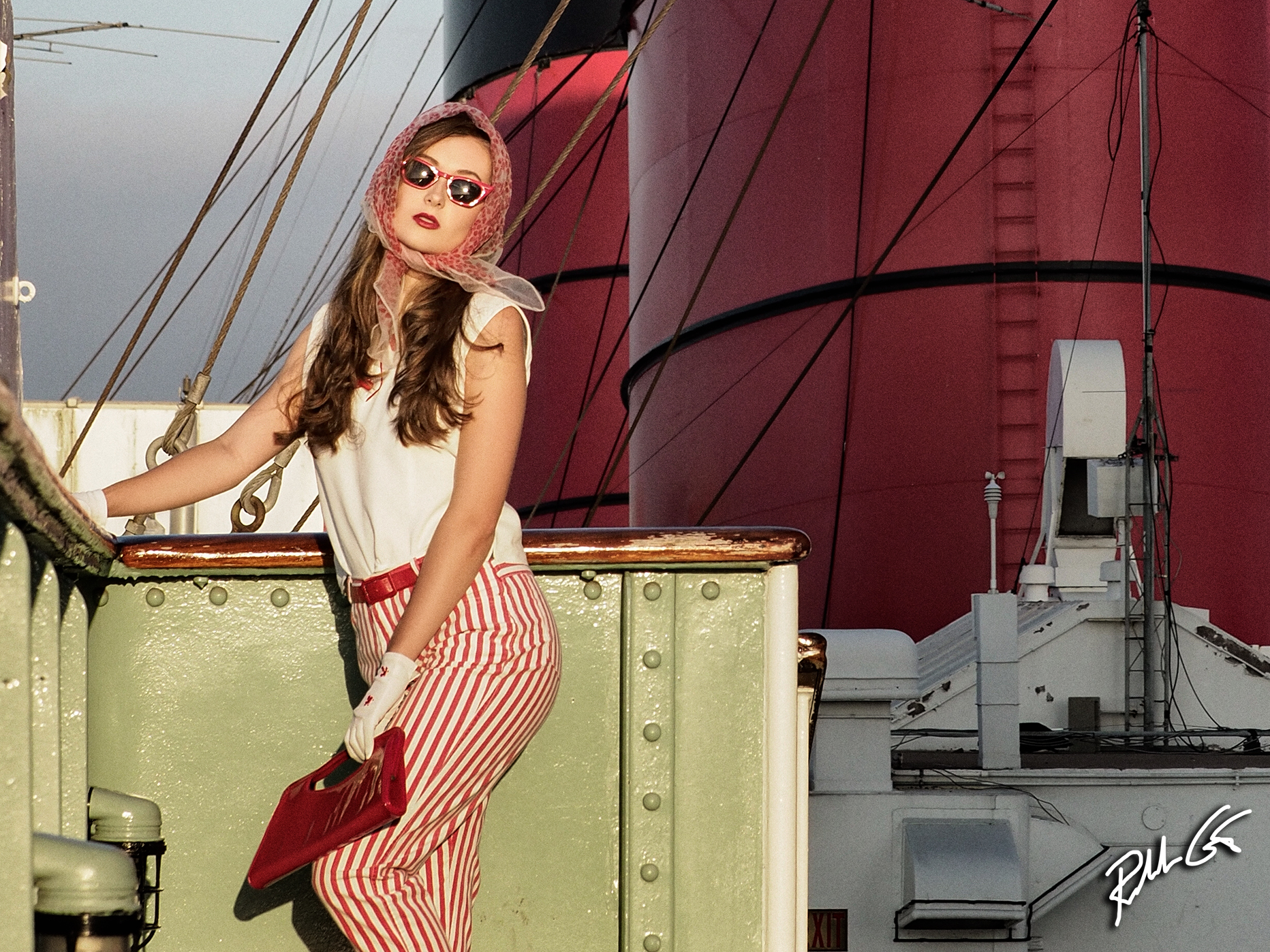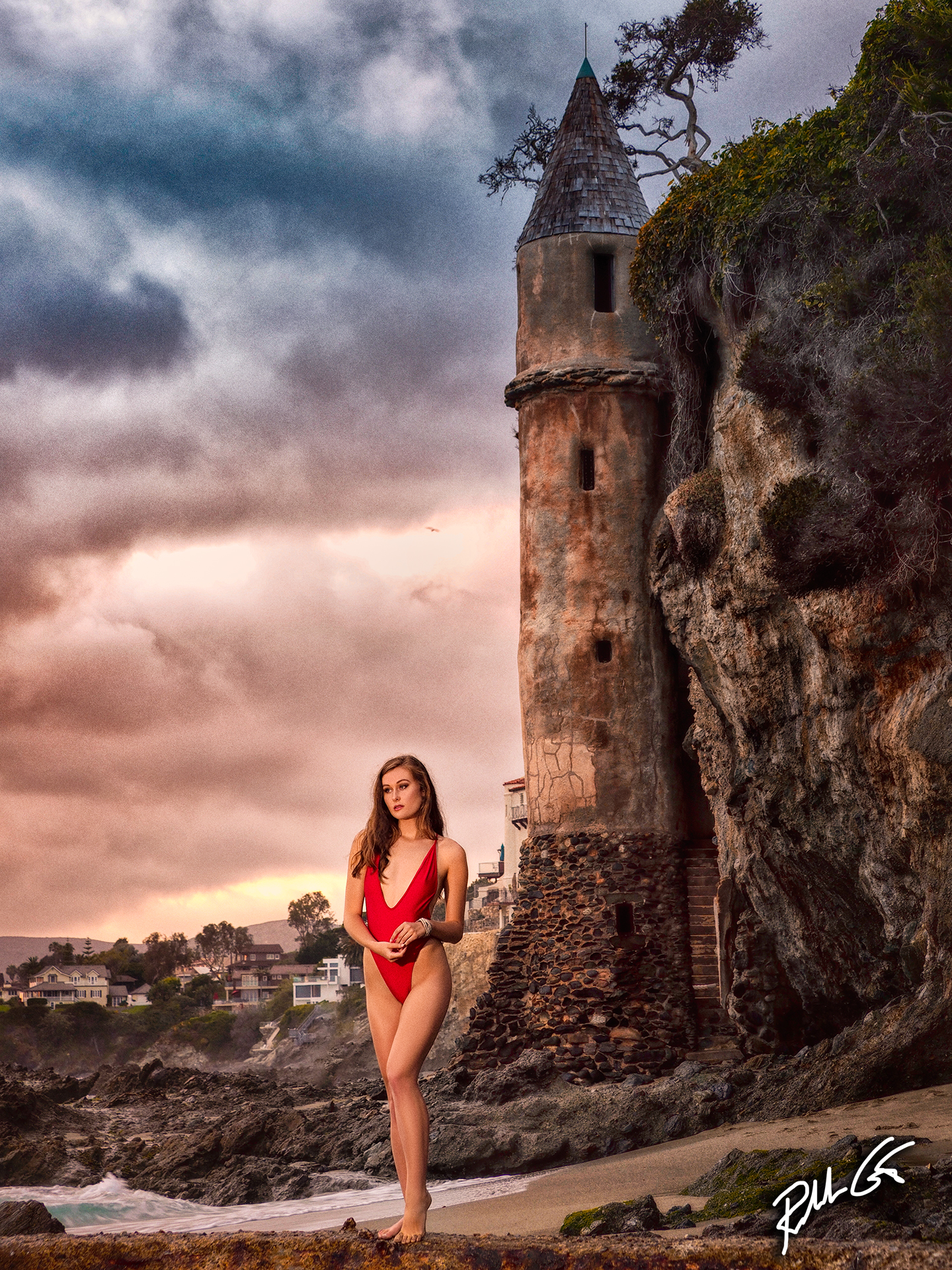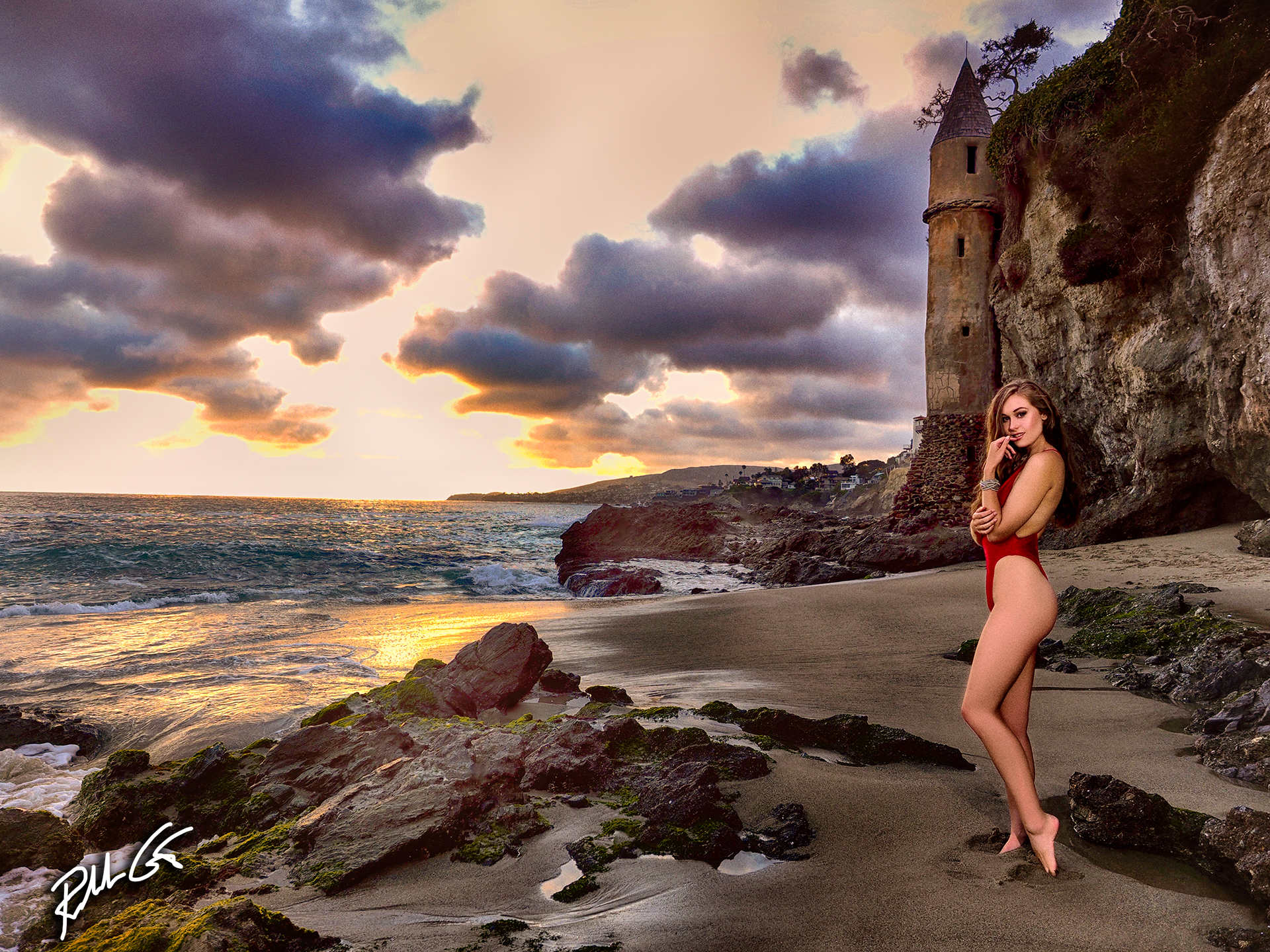Sometimes we look at a photograph and wonder, “How was that done?” and other times, “Oh, I could do that.” But in reality, it might look easy, but often it takes work, rarely are great shots stumbled upon and if they are, it happens more to photojournalists than fashion editorial or glamour photographers.

For this photo captured aboard the Queen Mary ship, the wardrobe was selected to match a more vintage look.
The greatest photographs come when you take the time to plan things out to include wardrobe, locations, logistics, and photographic equipment requirements. All these factors also help a photographer and sometimes even the talent, to pre-visualizethe intended final image. Pre-visualization gives everyone involved a starting point that will make any photo shoot easier.
Wardrobe
While it might look easy when it comes to wardrobe selection, there are factors to take into consideration. As a photographer you must think about how the wardrobe will match the time period you’d like to convey, especially if your vision leans toward a more vintage or retro type photograph.

This photograph took more time to plan, scout the location and get there, than to capture.
It’s good to ask yourself, and your talent for that matter, “Does the wardrobe selection fit the location or background? Does wardrobe selection convey the message in the final image?”
Often photographers will tell a model, bring a little bit of everything and we’ll go from there, and while even I’ve done this, when it comes to the ability to capture a great photograph, if you know the selected wardrobe beforehand, this information helps you choose the right location ahead of time and how you intend to light the image overall.
Locations
Locations should never be an afterthought and should be part of the planning process. When you know what your location will provide, especially backdrop wise, it can help you choose the right wardrobe and give you an idea of the photography equipment you’ll need. Like most professional photographers I don’t want to carry more equipment than I need. The old KIS rule applies, “keep it simple.”
When you know your location beforehand, it might look easy to get there and get it done, but you still have to plan what time to arrive for the best light and how you’ll use the light that is available or what lighting gear you’ll need to capture the location and your subject at their best.
If you’re headed to a location where all you need are photography reflectors, bring a back-up small flash just in case the weather blocks the sunlight and if you’re going to a location where you think you’ll need flash, bring a small photography reflector, like the SUNBOUNCE MINI, just in case you realize that reflected natural light will work better than artificial light.
Make sure you know what time the sun will set or rise, especially if you prefer to work during the golden hour. You can use the Sunset Sunrise Calculatorhere on SunbouncePro.com to help you plan the day. This free tool will help you figure out your logistics so you can arrive with plenty of time to scout the best angle plus set up your photography gear and for when your subject needs to arrive ready to go for the shoot with time to spare.
Logistics
Logistics isn’t just about on-time arrival. Logistics of a photo shoot involve the movement and care of people plus to prepare with any supplies you may need to accomplish a photo shoot to include simple things like water to stay hydrated and even the coordination with anyone that controls a location. In the case of a public location, logistics might involve involve any required permits too.
You also have to take weather into account before your planned photo shoot. A great photographer always checks the weather forecast regardless if their photo shoot takes place indoors or outdoors. Don’t assume you’ll have a bright sunny day and as it’s often said, hope for the best but plan for the worst.

Part of the logistics to shoot at this location was to locate it, scout it, then return at the appropriate time of day, in this case, sunset.
Equipment
As mentioned earlier, pre-visualize what you’ll need, whether it’s a photography reflector or portable studio flash even if you feel you can accomplish the photo shoot with just available light. You don’t have to bring the whole camera store with you, something as simple as one photography reflector and one flash unit will often suffice, but in more elaborate photo shoots you might want to consider a scrim like the SUNBOUNCE Sun-Swattertoo.
Obviously, you’ll need your cameras and lenses too, but don’t over pack, bring only what you need and when it comes to lenses, you can’t go wrong with a wide-to-normal zoom lens, like a 24mm to 80mm, and a normal-to-telephoto lens, like a 70mm to 200mm lens too. You can also bring your favorite prime lensespecially if it’s part of your photographic style to capture images.
When it comes to a great photograph, it might look easy to accomplish, but even top photographers and photojournalists know you must plan, previsualize, and research what it takes when it comes to wardrobe, locations, logistics, and photographic equipment requirements to capture great images. Your photography will also improve when you do the latter, not to mention, it will make it easier to accomplish your photography and capture that photographic masterpiece.



